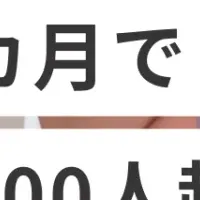
Significant Growth Predicted for the NFT Market Driven by Digital Art Demand
A Surge in the Non-Fungible Token Market
The non-fungible token (NFT) industry is experiencing a remarkable evolution, projected to grow by USD 84.13 billion between 2025 and 2029. According to a report by Technavio, this explosive growth is driven by a burgeoning interest in digital art and the transformative potential of AI technology. With a predicted CAGR of 30.3%, the future of NFTs looks promising despite existing uncertainties in the market.
Understanding NFTs and Their Impact
NFTs are unique digital assets safeguarded on the blockchain, allowing for the ownership and trade of specific items like art, collectibles, and even virtual real estate. Their rise has been particularly prominent in the gaming and entertainment sectors, where items such as trading cards and virtual goods have gained immense popularity. Blockchain technology not only guarantees transparency and security but also authenticates ownership in a way that traditional transactions cannot.
The Role of Key Industry Players
Several leading entities in the NFT space include Axie Infinity, Binance, and Decentraland Foundation. These companies are pushing the boundaries of digital ownership and commerce. For instance, brands like Visa and Budweiser are exploring NFTs as viable revenue sources, recognizing their unique potential to enhance consumer engagement through innovative rewards that cannot be replicated.
Insights into Market Drivers and Challenges
The increasing demand for digital art significantly boosts the NFT market. However, challenges—such as regulatory issues, consumer protections, and concerns about fraud—are prevalent. For instance, the legal landscape governing NFTs is still in flux, raising questions about ownership rights and product authenticity. Moreover, sellers face obstacles such as the unpredictable nature of NFT pricing, influenced by factors like scarcity and buyer perception.
The Future of NFTs
As more businesses transition to Web 3.0, established names within e-commerce, including eBay and Amazon, show an increasing interest in NFTs. As these platforms integrate NFTs, the volume of transactions is likely to surge, further propelling market growth. Additionally, emerging technologies like Virtual Reality (VR) and Augmented Reality (AR) are expected to revolutionize the NFT landscape, providing consumers with immersive experiences that blend the digital and physical realms.
Market Segmentation and Geographic Insights
The NFT market is segmented into several applications including collectibles, sports, arts, and more. The diverse nature of these categories necessitates a targeted approach for marketers and investors alike. Geographically, markets in APAC regions currently lead in contributions, reflecting rapidly growing digital economies.
Conclusion
The NFT market represents a pivotal shift in how digital assets are perceived and transacted. With digital ownership set to reshape commerce, creativity, and investment, various stakeholders must be prepared to navigate the changing complexities and emerging opportunities within this dynamic landscape. As NFTs continue to bridge physical and digital worlds, the next few years will be crucial in defining their role in modern society.
Topics Entertainment & Media)










【About Using Articles】
You can freely use the title and article content by linking to the page where the article is posted.
※ Images cannot be used.
【About Links】
Links are free to use.